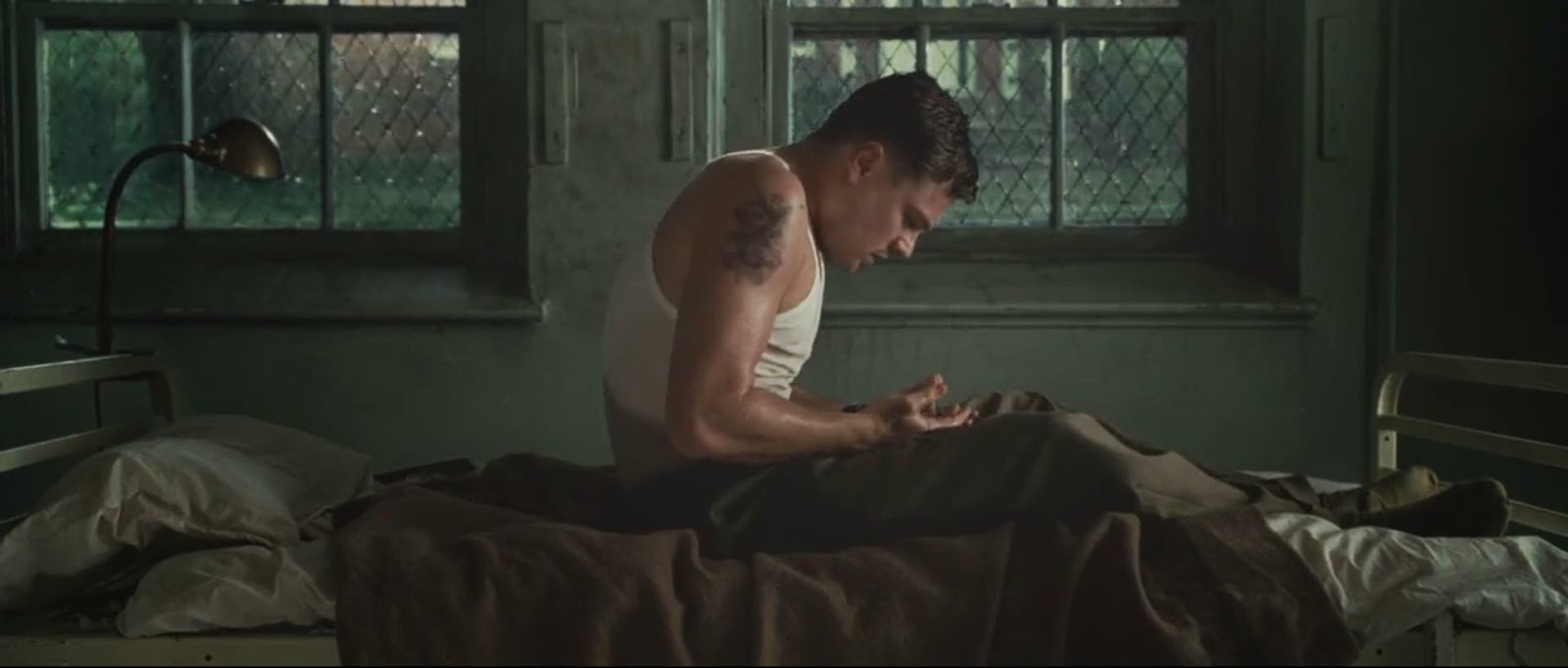The film makes heavy use of flashbacks as a means of exposition but also in visualizing Teddy's damaged mental state. In the opening scene, a question about Teddy's wife triggers a flashback sequence. The editing is fast and fragmented, conveying an intrusive thought as he remembers his wife. The sound of the scene fades out to leave a sustained low tone and ghostly choir, contrasting with and disrupting the happiness shown in the images.
This device is important as one of the key themes the film develops is whether our own memories can be trusted. This first flashback sequence therefore establishes a number of things:
- Provides exposition about Teddy's past with his wife
- Fast pace and contrasting music - establishes that the memory is intrusive and sets a darker tone
- Freeze-frame - Conveys Teddy's fragmented memory and damaged mental state
- Engages the viewer and introduces the key theme of not trusting our perceptions or memories
To a similar effect as the freeze-frame in the first sequence, deliberate continuity errors, jump-cuts and later, reversed shots (when he is smoking) convey Teddy's fragmented memory and the break down of reality. As these effects are jarring for the viewer, we share Teddy's sense that these flashbacks are difficult and painful to relive. Upon exiting this sequence, as with the other flashbacks, the soft music cuts out abruptly to foreground his sudden return to reality.
As well as conveying the break from reality in the flashbacks, the breakdown of the editing is even more important when seen in the context of the whole story. At the end of the film we are told that Teddy's memories of his wife are all false, and that he has created them as part of an alternate self. With this knowledge, we can view the jump-cuts, freeze-frames and other jarring devices as hints that the details in Teddy's memories do not sit right (or do not create a full, coherent story). The other sequences outside this all flow naturally. It is as though they have been placed together and constructed artificially in Teddy's mind using elements from true events, perhaps even mirroring the editing process.
At the end of the film, Teddy has a flashback where he relives the actual events which led to the death of his wife and children. As this is reality, none of the devices which highlight the surrealism of the other sequences are used. The scene plays out in real time with no jumps, and the colours, lighting and sounds are all natural.
Notable also is the absence of the bright white flash which precedes the other flashbacks, again foregrounding this is 'reality'.
Another device used in the flashbacks and throughout the film is POV shots. As a viewer joining Teddy at the start of the film, we believe both him and the stories about his past. When, at the end of the film, this is all revealed to be false, we share his sense of confusion and undergo a similar process of reflection and erasure. The POV shots in the film build to this as we have experienced events exactly as Teddy has experienced them (being inside his head), including even his intrusive flashbacks. As a result we doubt our own memories of what we've seen in the film, just as Teddy does of what he's experienced.
Key moments in the film make use of POV shots to connect the viewer with Teddy's emotions. For example, the build of tension as we enter the facility's armoured gates, the sense of unease as he enters the hospital, the close analysis of the subjects he is interviewing among many others.
Notable also is the repeated framing of the staff and guards in the centre of the frame between Teddy and Chuck. By blocking the screen we get a sense they are a barrier or obstruction to their investigation, immediately raising suspicions around their character. The difference in framing size between them and Teddy is intimidating, asserting that they are the figures of authority.
The angle of the shot, looking at their backs (repeated in the shot below), is also slightly unnerving for the audience, suggesting that they are hiding something from them, adding to the sense of unease and suspicion.





















No comments:
Post a Comment